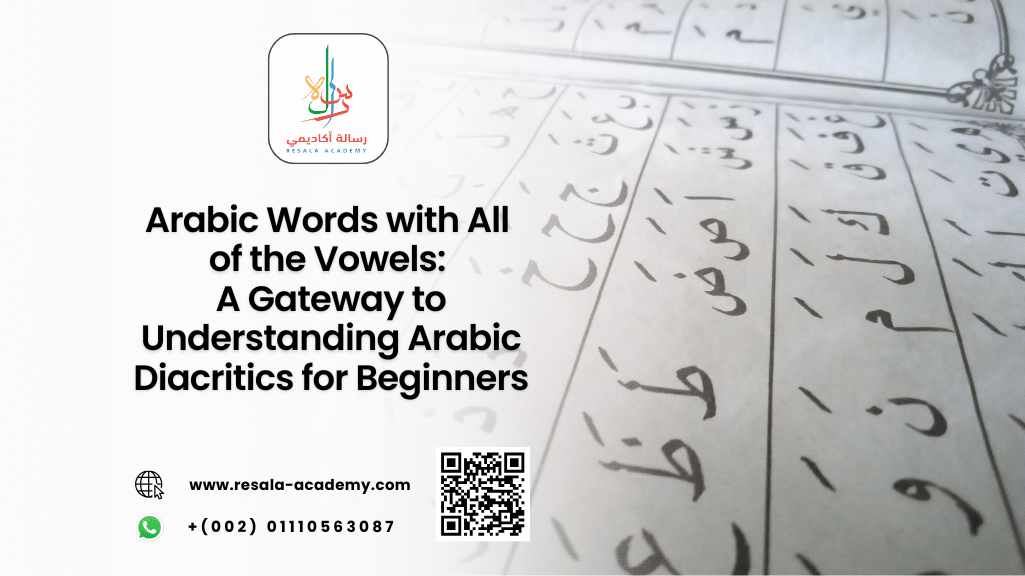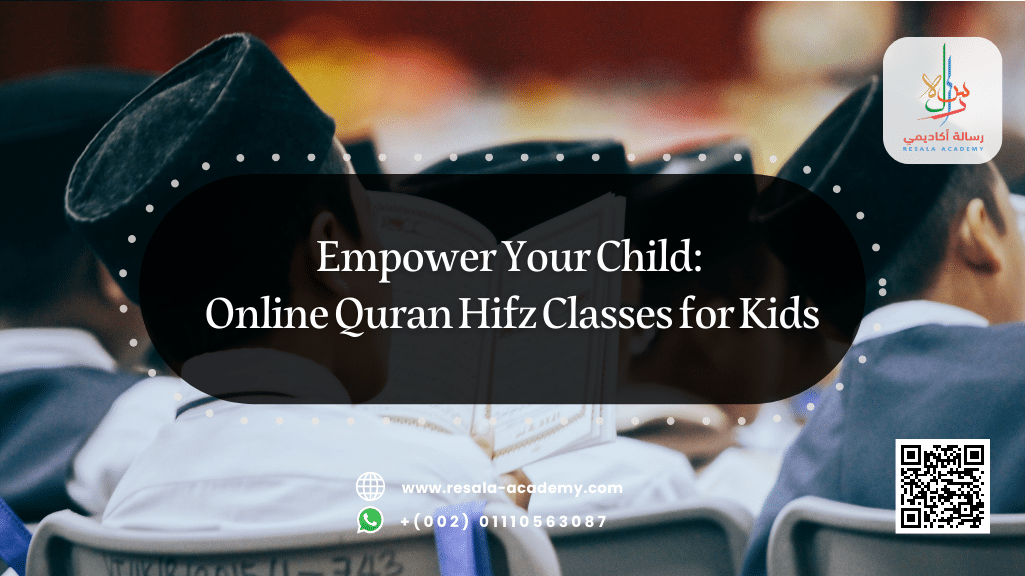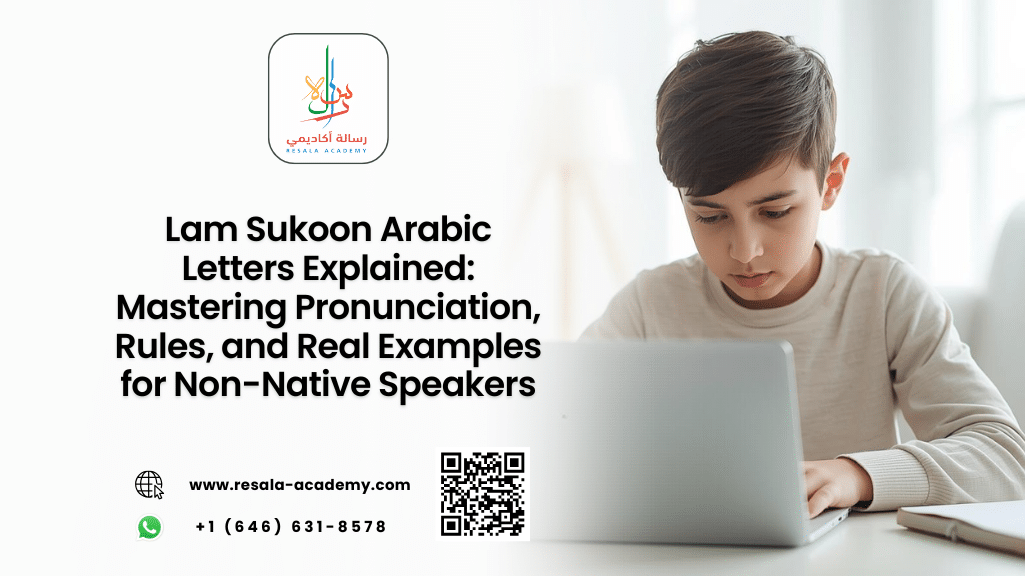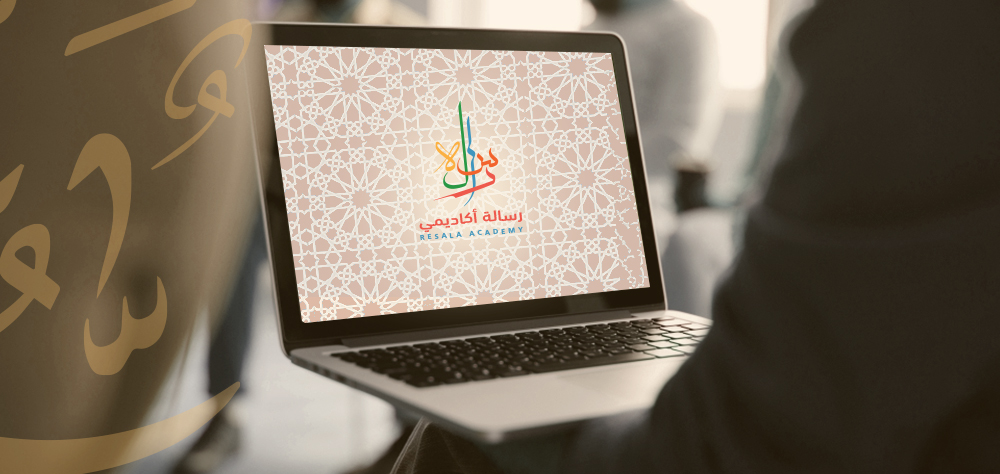Table of Contents
Arabic Words with All of the Vowels: A Gateway to Understanding Arabic Diacritics for Beginners
Learning Arabic as a non-native speaker can be both a rewarding and challenging journey. One of the first hurdles learners encounter is mastering the Arabic vowel system, known as diacritics or Harakat. These small marks are essential in understanding pronunciation, meaning, and grammatical structure.
In this comprehensive guide, we will explore Arabic words with all of the vowels, providing a foundational understanding of Arabic diacritics. This article is crafted specifically for beginners and highlights how institutions like Resala Academy can guide you through your Arabic learning journey.
What Are Arabic Vowels (Harakat)?
Arabic is a consonant-heavy language, and unlike English, it uses diacritical marks to indicate short vowels. These marks are placed above or below letters and are crucial for correct pronunciation and meaning. The three primary short vowels in Arabic are:
- Fatha ( َ ) – Represents a short “a” sound (as in “cat”)
- Kasra ( ِ ) – Represents a short “i” sound (as in “bit”)
- Damma ( ُ ) – Represents a short “u” sound (as in “put”)
These are collectively referred to as Harakat. There are also two additional diacritics:
- Sukun ( ْ ) – Indicates the absence of a vowel
- Shadda ( ّ ) – Indicates a doubled consonant
Understanding these marks is vital for reading and speaking Arabic accurately.
Why Focus on Words with All of the Vowels?
Studying words with all of the vowels helps learners:
- Recognize and pronounce each vowel sound
- Understand how vowel changes affect word meaning
- Improve reading fluency
- Build a strong foundation for grammar and syntax
These words serve as practical examples of how diacritics function in real language usage.
Examples of Arabic Words with All of the Vowels
Let’s explore some Arabic words that include Fatha, Kasra, and Damma—the three core short vowels. Each example includes the Arabic script, transliteration, English meaning, and context.
1. كَتَبَ (kataba)
- Arabic: كَتَبَ
- Transliteration: kataba
- Meaning: He wrote
- Vowels: Fatha on all three letters
- Context: A basic verb in the past tense, often used in beginner Arabic classes.
2. كِتَابٌ (kitābun)
- Arabic: كِتَابٌ
- Transliteration: kitābun
- Meaning: A book
- Vowels: Kasra on the first letter, Fatha on the second, Damma on the last
- Context: Common noun, useful for vocabulary building
3. مُدَرِّسٌ (mudarrisun)
- Arabic: مُدَرِّسٌ
- Transliteration: mudarrisun
- Meaning: Teacher
- Vowels: Damma on the first letter, Kasra on the second, Shadda on the third
- Context: Frequently used in classroom settings
4. فَهِمَ (fahima)
- Arabic: فَهِمَ
- Transliteration: fahima
- Meaning: He understood
- Vowels: Fatha, Kasra, Fatha
- Context: Useful for expressing comprehension
5. قُرْآنٌ (Qur’ānun)
- Arabic: قُرْآنٌ
- Transliteration: Qur’ānun
- Meaning: The Quran
- Vowels: Damma, Sukun, Fatha, Damma
- Context: Central to Islamic studies
These examples demonstrate how diacritics guide pronunciation and meaning. For structured learning, Resala Academy offers expert-led courses that break down these concepts in a beginner-friendly way.
The Role of Diacritics in Arabic Learning
1. Clarifying Ambiguity
Arabic words without diacritics can often be ambiguous. For example:
- كتب can mean:
- kataba (he wrote)
- kutiba (it was written)
- kutub (books)
2. Enhancing Pronunciation
Correct vowel usage ensures accurate pronunciation. This is especially important in Quranic Arabic, where mispronunciation can alter meanings significantly.
3. Grammar and Syntax
Arabic grammar relies heavily on vowel endings to indicate case, mood, and voice. For example:
- Muslimun (مُسْلِمٌ) – Nominative
- Musliman (مُسْلِمًا) – Accusative
- Muslimin (مُسْلِمٍ) – Genitive
How to Practice Arabic Vowels Effectively
Use Diacritic-Rich Texts
Start with texts that include full Tashkeel (vowel markings), such as:
- Children’s books
- Quran with Tajweed
- Beginner Arabic textbooks
Practice with Native Speakers
Engage in conversation with native speakers or tutors who can correct your pronunciation.
Enroll in a Structured Program
Institutions like Resala Academy offer tailored programs for non-native speakers, focusing on pronunciation, vocabulary, and grammar.
Common Challenges for Beginners
Ignoring Diacritics
Many learners skip over diacritics, assuming they’re optional. This leads to poor pronunciation and misunderstanding.
Overreliance on Transliteration
While helpful initially, relying too much on transliteration can hinder true fluency.
Lack of Practice
Consistency is key. Without regular practice, vowel recognition and usage can deteriorate.
How Resala Academy Makes Arabic Learning Easier
Resala Academy is a premier online institution specializing in Arabic and Quran education for non-native speakers. Here’s how they stand out:
✅ Native Arabic-speaking instructors
✅ Customized beginner-friendly curriculum
✅ Emphasis on Tajweed and diacritics
✅ Live interactive classes
✅ Flexible scheduling
Whether you’re learning Arabic for religious, academic, or personal reasons, Resala Academy’s intensive Arabic course offers the tools and support you need to succeed.
Deepening Your Understanding: Advanced Insights into Words with All of the Vowels
To truly master Arabic pronunciation and comprehension, learners must go beyond basic vocabulary and explore how words with all of the vowels function in different linguistic contexts. These words are not only phonetic exercises but also gateways to understanding Arabic morphology and syntax. Below are advanced insights that provide a richer perspective for serious students of Arabic:
Morphological Patterns (وزن الصرفي):
- Arabic words follow specific root-based patterns that determine their structure and meaning.
- Words like فَعَلَ (fa‘ala) and فَعِيل (fa‘īl) incorporate different vowel placements that shift the word from verb to adjective or noun.
- Studying words with all short vowels in various morphological forms helps learners internalize these patterns and apply them in real-time communication.
Phonological Balance and Rhythm:
- Arabic is a rhythmic language, and words containing all three vowels (Fatha, Kasra, Damma) often exhibit a natural musicality.
- This phonological balance is especially important in Quranic recitation and classical Arabic poetry, where vowel variation enhances flow and meaning.
- Learners who practice such balanced words develop better intonation and fluency.
Semantic Precision Through Vowel Variation:
- Vowel changes can drastically alter a word’s meaning, even when the consonants remain the same.
- For instance, عَلِمَ (‘alima) means “he knew,” while عُلِمَ (‘ulima) means “it was known.”
- Focusing on Arabic words with all of the vowels trains learners to detect and apply these subtle yet critical distinctions.
Contextual Usage in Formal and Colloquial Arabic:
- While Modern Standard Arabic (MSA) uses diacritics in formal writing and education, regional dialects often omit them.
- Learning vowel-rich words in MSA builds a strong grammatical foundation, making it easier to adapt to dialects later.
- Resala Academy’s curriculum bridges this gap by teaching both formal and conversational usage.
Make learning the Arabic alphabet fun and effective! Discover how storytelling in English builds strong literacy foundations for kids—read the full guide now!
Cognitive Benefits of Practicing Vowel-Rich Arabic Words
Engaging with vowel-inclusive Arabic vocabulary not only enhances linguistic skills but also stimulates cognitive development. Here’s how focusing on these specialized words can benefit learners intellectually and linguistically:
Improved Auditory Discrimination:
- Regular exposure to words with all of the vowels sharpens the ear to subtle phonetic differences.
- This is particularly useful for distinguishing between similar-sounding words and improving listening comprehension.
Enhanced Memory Retention:
- Words that include a variety of vowel sounds are easier to remember due to their rhythmic and phonetic diversity.
- This makes them ideal for vocabulary drills, flashcards, and spaced repetition systems.
Accelerated Reading Fluency:
- Practicing vowel-rich words trains the brain to process diacritics quickly, leading to faster and more accurate reading.
- This fluency is essential for reading Arabic texts with full Tashkeel, such as the Quran or classical literature.
Greater Confidence in Speaking:
- Learners who master the articulation of all vowel sounds become more confident in conversation.
- They are less likely to hesitate or mispronounce words, especially in formal settings or religious contexts.
Cross-Skill Integration:
- Working with Arabic words that contain all vowel types reinforces grammar, vocabulary, pronunciation, and comprehension simultaneously.
- This holistic approach is a core feature of the Resala Academy methodology, ensuring well-rounded language acquisition.
By incorporating these advanced strategies and cognitive insights, learners can elevate their Arabic proficiency and gain a deeper appreciation for the language’s intricate beauty.
Resala Academy: Your Path to Arabic Mastery Starts Here
Are you ready to unlock the beauty of the Arabic language?
At Resala Academy, you’ll embark on a transformative journey guided by expert instructors who understand the unique challenges faced by non-native speakers. From mastering words with all of the vowels to reciting the Quran with precision, Resala Academy is your trusted partner every step of the way.
Don’t wait—enroll now and experience Arabic the way it was meant to be learned: clearly, confidently, and correctly.
Frequently Asked Questions (FAQs)
1. What are Arabic diacritics, and why are they important?
Arabic diacritics, or Harakat, are small marks that indicate short vowels and pronunciation cues. They are essential for:
- Proper pronunciation
- Understanding grammatical structure
- Avoiding ambiguity in meaning
Learn more about Arabic Harakat.
2. How can I identify Arabic words with all of the vowels?
Look for words that include Fatha, Kasra, and Damma within the same word. Examples include:
- كِتَابٌ (kitābun)
- فَهِمَ (fahima)
These words are often introduced in beginner courses at Resala Academy.
3. Can I learn Arabic vowels without knowing the alphabet?
While it’s possible to start with transliteration, learning the Arabic alphabet is crucial for long-term success. Resala Academy offers beginner courses that teach both the alphabet and vowel usage simultaneously.
4. How long does it take to master Arabic diacritics?
With consistent practice and guided instruction, most learners can master basic diacritics within 1–3 months. Enrolling in a structured program like Resala Academy accelerates this process.
5. Are diacritics used in everyday Arabic writing?
In most modern Arabic texts, diacritics are omitted. However, they are essential in:
- Quranic texts
- Educational materials
- Children’s books
Learning them is vital for beginners and for reading religious texts accurately.
Conclusion
Mastering Arabic words with all of the vowels is more than a linguistic exercise—it’s a gateway to understanding the soul of the Arabic language. These vowels breathe life into words, guiding pronunciation, meaning, and emotion. For non-native speakers, this journey may seem daunting, but with the right guidance, it becomes a deeply enriching experience.
Resala Academy stands as a beacon for learners worldwide, offering expert instruction, personalized support, and a curriculum rooted in clarity and tradition. Start your Arabic learning journey today and unlock the beauty of a language spoken by millions across the globe.
Explore more about Arabic vowels, Quranic recitation, and Arabic grammar to deepen your understanding. Ready to begin? Join Resala Academy now and transform your Arabic learning experience.




